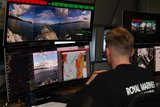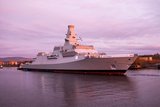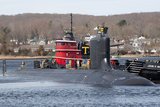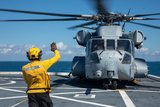UK RAF and NATO members assess SeaVue
Raytheon's SeaVue radar can be installed onto uncrewed vehicles for maritime surveillance. (Photo: Raytheon)
Raytheon has successfully demonstrated its maritime surveillance systems onboard the MQ-9B SeaGuardian RPA in joint exercises for the RAF and other NATO members.
The SeaVue radar and AN/DAS-4 Multi-spectral Targeting System both excelled in critical surveillance radar functions for port and board security, SAR and disaster response during operations over land and sea.
The company’s SeaVue radar provides enhanced high-altitude persistent surveillance and identifies targets of interest on the surface of the water rapidly and efficiently to support tactical decision making.
The AN/DAS-4 sensor suite offers operators HD EO surveillance and full-motion video to identify and engage targets with a high degree of accuracy.
Barbara Borgonovi, vice president of Intelligence Surveillance and Reconnaissance Systems for RI&S, commented: ‘unmanned platforms using our solutions can fly higher and [for] longer’.
The demonstrations were led by General Atomics Aeronautical Systems, the developer of the SeaGuardian RPA.
According to Shephard Defence Insight, SeaVue has been purchased by four countries and can be operated from rotary- and fixed-wing aircraft, ship and land platforms.
Related Equipment in Defence Insight
More from Naval Warfare
-
![Hanwha wins Australian government approval to increase its stake in Austal]()
Hanwha wins Australian government approval to increase its stake in Austal
The contract would mean the two shipbuilders can collaborate strategically and enhance shipbuilding capabilities in Western Australia.
-
![Royal Australian Navy sizes up modernisation plans for new and existing capabilities]()
Royal Australian Navy sizes up modernisation plans for new and existing capabilities
The Australian navy is pushing ahead with its efforts to modernise its workforce and capabilities while balancing risky submarine upgrades, ageing Collins-class boats and a shrinking minehunter fleet. Head of navy capability RAdm Stephen Hughes updated Shephard on the force’s progress.
-
![UK to join US Navy’s Virginia-class submarine assembly effort to speed up construction]()
UK to join US Navy’s Virginia-class submarine assembly effort to speed up construction
The expansion of the Virginia-class submarine construction to UK shores could accelerate the project as US shipbuilders continue to fall short of delivery goals.
-
![US Navy seeks new sensors for the CH-53K King Stallion heavy-lift helicopter]()
US Navy seeks new sensors for the CH-53K King Stallion heavy-lift helicopter
The US Navy intends to publish a draft request for proposals in Q2 2026 and conduct an open competition for the supply of new electro-optical and infrared capabilities for the CH-53K heavy-lift helicopter.























